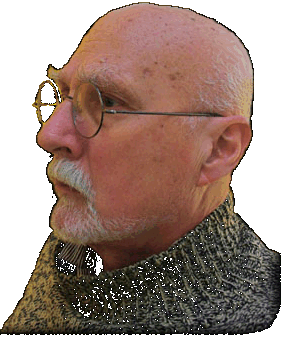Gurdon’s Obituary
Gurdon Ransom Miller III, known to friends and family as “Murph,” died on November 4, 2024, at home in Forestville, California. He is survived by his beloved wife Catriona; daughter Samantha; sons Alden, Jacob, and Malcolm; daughter-in-law Heidi; and his grandchildren Noe and Rowen.
Born in northern Colorado and raised in southern California and New Mexico, Murph was a lifelong artist, polymath, and intellectual whose loyalty, commitment, and inquisitive mind left an indelible mark on everyone in his world. His life was defined by dedication to his wife, family, friends, and the artwork he saw as essential to his purpose. His unforgiving intellectual curiosity imbued him with a well-sharpened sense of critical thinking, keen for discussion on a variety of subjects.
CAREER
After graduating from El Monte High School, Murph majored in art and geography at UC Berkeley, enriching his understanding of the world, profoundly shaping his work and personal philosophy.
Armed with a Master’s degree in urban planning from Pratt Institute in Brooklyn, NY, Murph began his 30-year career in the field of land use policy and zoning as an urban planner in Newark, NJ, where he became a senior city planner. He spoke fondly of his favorite assignment as the planning department’s liaison to the city police department: to shepherd a new firing range through the permitting process. (He loved the field work.)
It was at the Los Angeles City Planning Department that Murph had a major impact in a career that spanned more than 25 years. He once again rose through the ranks to senior city planner based on his original technical contributions and his effectiveness as a collaborator. Early on he was involved in ground-breaking policy documents on water quality, air quality, and housing, as well as strategies for city-wide General Plan implementation. Later, he was in the forefront of the effort to make community plans compatible with recently enacted, state-wide coastal development regulations.
Deep down, Murph most relished his role as the nurturer and protector of the “counter culture.” When he retired, he was managing the department's primary public counter, responsible for supervising a large staff of planners and clerical workers and providing an array of services to the development community and the general public. His worldview required that he cultivate a team mentality among staff, from whom he demanded excellence of service. Murph was well-known as fiercely protective of any staff member subjected to rudeness or abuse.
When he wasn't exercising his technical expertise and interpersonal skills in the workplace, they were on display through his volunteer work for the city of Sierra Madre CA, where he lived with his family. He was able to provide land use and zoning perspectives for addressing the myriad challenges facing a hillside community with limited access and an extensive wildland interface. He served on the city’s Planning Commission and was a member of the Sierra Madre Historical Society.
